
- Constellation: Pegasus
- Right Ascension: 21h 29m 58.33s
- Declination: +12° 10′ 01.2″
- Distance: 33,000 ly
Messier 15, one of the oldest globular clusters around our galaxy, estimated age of 12+ billion years, and a densely compacted core due to core collapse. M15 contains an estimated 100,000 stars. Imaged during first quarter Moon.
- Details
- Category: Globular Clusters
- Telescope: GSO RC10
- Camera: ZWO A071 Color
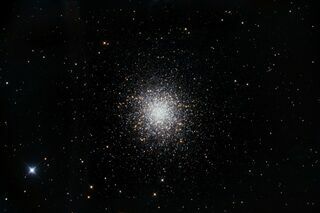
- Constellation: Hercules
- Right Ascension: 16h 41m 41.24s
- Declination: +36°27’35.5”
- Distance: 22,200 ly
One of the best known northern hemisphere globular clusters containing around 300,000 stars. Globular clusters are are old objects and M13 is estimated to be around 11.5 billion years old based on the amount of heavy metal contents in its stars. Imaged just before a full Moon.
- Details
- Category: Globular Clusters
- Telescope: GSO RC10
- Camera: ZWO A071 Color
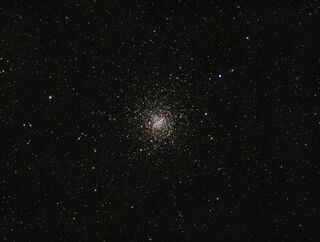
- Constellation: Scorpius
- Right Ascension: 16h 23m 35.22s
- Declination: –26° 31′ 32.7″
- Distance: 7,200 ly
Messier 4 is a globular cluster located in the constellation of Scorpius. M4 is one of the nearer globular clusters at a distance of 7,200 light years. It was one of the first globular clusters to be resolved as a collection of stars by Charles Messier who added it to his catalog in 1764. A relative small globular cluster as it only contains 20,000+ plus stars. It may have had more stars in its past, but it's orbit takes it through the Milky Way's disk where it could loose stars due to gravitational interactions.
- Details
- Category: Globular Clusters
- Telescope: Explore Scientific 127 Refractor
- Camera: ZWO 1600 MM
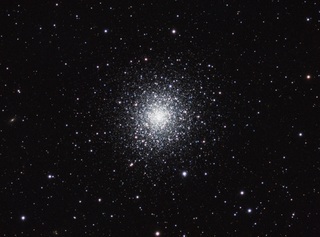
- Constellation: Hercules
- Right Ascension: 17h 17m 07.39
- Declination: +43° 08′ 09.4″
- Distance: 26,700 ly
Globular cluster M92, less well known than the more famous M13, despite being one of the brightest globular clusters in the northern hemisphere. It is also estimated to b one of the oldest globular clusters at an estimated 14.2 billion years old.
- Details
- Category: Globular Clusters
- Telescope: Explore Scientific 127 Refractor
- Camera: Atik 314l+
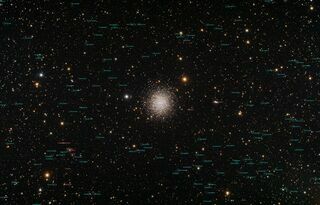
- Constellation: Hercules
- Right Ascension: 16h 41m 41.24s
- Declination: +36° 27′ 35.5″
- Distance: 22,200
Messier 13, the Great Globular cluster located in the constellation of Hercules. It is one of the brightest and best know globular clusters in the northern hemisphere. The cluster has a diameter of around 145 light years and contains about 300,000 stars.
In this wide field view, many distant background galaxies are revealed.
- Details
- Category: Globular Clusters
- Telescope: EDT 80mm Reftactor
- Camera: ZWO A071 Color
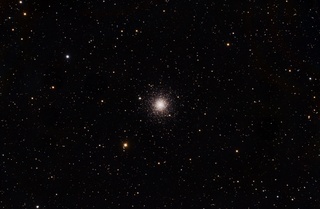
- Constellation: Canes Venatici
- Right Ascension: 13h 42m 11.62s
- Declination: +28°22’38.2”
- Distance: 33,900 ly
Messier 3 is one of the largest, brightest globular cluster in the night sky. It contains an estimated 500,000 stars. Located in the constellation of Canes Venatici at a distance of 33,900 light years away from Earth. The cluster contains more than 274 variables stars, with most of them being the RR Lyrae type of variable.
- Details
- Category: Globular Clusters
- Telescope: EDT 80mm Reftactor
- Camera: ZWO A071 Color